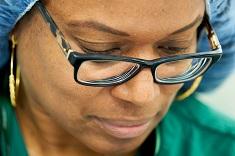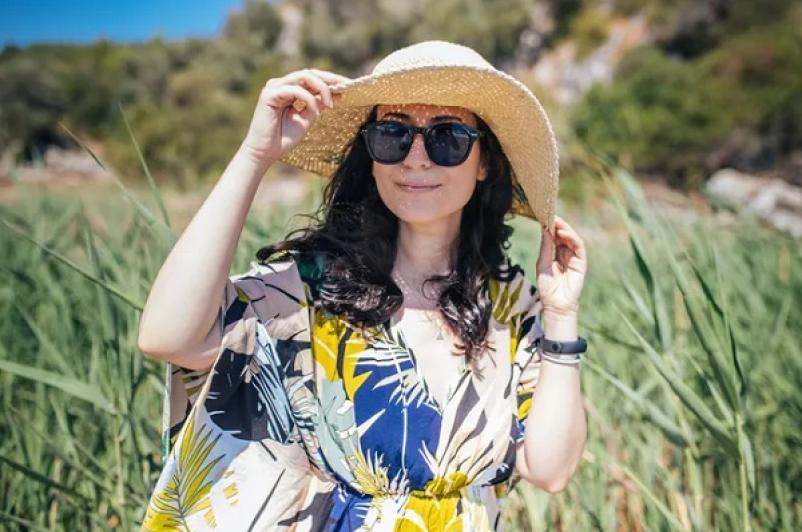
Now that summer is officially here, warmer days are more consistent, which means the possibility of spending more time outdoors in the sun. Sunlight is essential for our physical, emotional and mental health. There are many benefits of being in the sun; improving sleep, reducing stress and strengthening your immune system are just a few. Although sunlight is important for our health and well-being, it’s important to take steps to protect your skin from the sun, even on cloudy days.
Whenever you’re outdoors, you should protect your skin from the sun's harmful rays. Practicing sun safety can reduce your risk of sunburn, premature skin aging like age spots, sagging and wrinkles, as well as developing skin cancer. “Sun protection is so important because melanoma, a type of skin cancer that starts in the melanocytes, cells that make the pigment that gives skin its color, is primarily caused by sun exposure, which means that everyone is at risk. Nearly five million people a year are diagnosed with melanoma in the United States, and that is more than all other cancers combined,” said UHS dermatologist Uzoma Oranu, MD.
Skin cancer is the most common cancer in the United States, and the majority of cases are preventable. This expert insight from dermatologists tells you how to use shade, clothing and sunscreen to practice sun safety and reduce your risk of developing skin cancer.
- Seek shade -Seek shade when appropriate, remembering that the sun’s rays are the strongest between 10 a.m. and 2 p.m. You can also look at your shadow. Any time your shadow is shorter than you, seek shade.
- Wear sun-protective clothing - Wear a lightweight and long-sleeved shirt, pants, a wide-brimmed hat and sunglasses with UV protection when possible. For more effective protection, select clothing with an ultraviolet protection factor (UPF) number on the label.
- Apply sunscreen - To all skin not covered by clothing, apply a sunscreen that offers:
- Broad-spectrum protection
- Water resistance
- SPF of 30 or higher
If your sunscreen is tinted with iron oxide, it’s best to protect your skin from dark spots. Iron oxide protects your skin from the sun’s visible light. Tinted sunscreens do not leave the white residue or “cast” on your skin that some sunscreens do. Choose a tinted sunscreen that matches your skin tone, and remember to reapply your sunscreen every two hours or after swimming or sweating.
Signs of melanoma can show up on the skin in many ways. It can look like a mole, freckle or age spot. Dr. Oranu said, “Usually if the growth or spot seems to be changing in shape, size, color or anything of that sort, you should have it evaluated. If it looks to be an area of concern, then a biopsy would take place and sent to pathology for testing.” Another important sign is a spot that looks different from all other spots on your skin – known as the ugly duckling sign. A great way to recognize signs of melanoma is the ABCDE rule.
- A is for Asymmetry - Half of the mole or birthmark does not match the other.
- B is for Border - The edges are irregular, ragged, notched or blurred.
- C is for Color - The color is not the same all over and may include different shades of brown or black, or sometimes with patches of pink, red, white or blue.
- D is for Diameter - The spot is larger than 6 millimeters across (about ¼ inch – the size of a pencil eraser), although melanomas can sometimes be smaller.
- E is for Evolving - The mole is changing in size, shape or color.
Getting the right amount of sunlight is different for everyone. It depends on your skin tone, age, health history, diet and where you live. In general, scientists think five to 15 minutes or up to 30 minutes if you’re dark-skinned – is about the right amount without causing any health problems. You can stay out longer and get the same effect if you use sunscreen. Talk to your doctor about what’s right for you.
Remember, it’s important to tell your doctor about any changes or new spots on your skin or growths that look different from the rest of your moles, freckles or sunspots. It’s sometimes hard to tell the difference between melanoma and an ordinary mole, so show your doctor any area that is concerning to you.
For more information about sun safety or to make an appointment with a UHS dermatologist, visit www.nyuhs.org.


